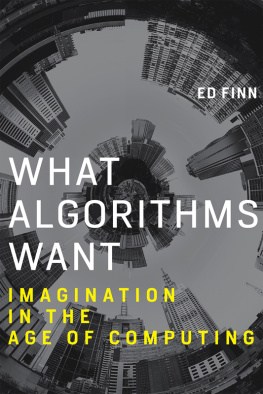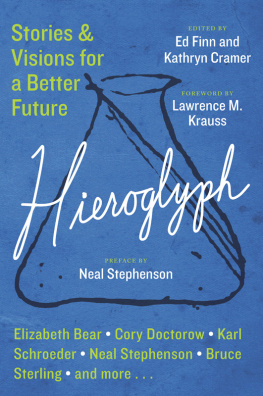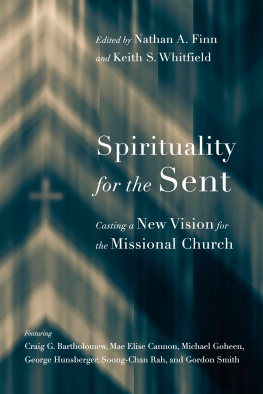
What Algorithms Want
Imagination in the Age of Computing
Ed Finn
The MIT Press
Cambridge, Massachusetts
London, England
2017 Massachusetts Institute of Technology
All rights reserved. No part of this book may be reproduced in any form by any electronic or mechanical means (including photocopying, recording, or information storage and retrieval) without permission in writing from the publisher.
This book was set in Stone Sans and Stone Serif by Toppan Best-set Premedia Limited. Printed and bound in the United States of America.
Library of Congress Cataloging-in-Publication Data
Names: Finn, Ed.
Title: What algorithms want : imagination in the age of computing / Ed Finn.
Description: Cambridge, MA : MIT Press, [2017] | Includes bibliographical references and index.
Identifiers: LCCN 2016030924 | ISBN 9780262035927 (hardcover : alk. paper)
eISBN 9780262338820
Subjects: LCSH: Information technology--Social aspects. | Computers--Social aspects. | Algorithms--Social aspects.
Classification: LCC HM851 .F5565 2017 | DDC 303.48/34--dc23 LC record available at https://lccn.loc.gov/2016030924
ePub Version 1.0
Acknowledgments
This book owes its existence to the generosity and support of many people and institutions. I count myself very lucky to have the support of my academic home, Arizona State University, in a tremendous range of large and small ways. Thanks go to President Michael Crow, for hiring me and making my unique position possible, and to the many university leaders who continue to support our strange experiment in imagination. I am especially thankful to the School of Arts, Media & Engineering, Director Sha Xin Wei, and Deans Steven Tepper and George Justice, for granting a vital research leave during the early composition phase of the book.
I am deeply grateful to my colleagues at the Center for Science and the Imagination who have supported my long and solitary sojourn as I carved out time to work on this book among many other pressing projects. Thanks to Ruth Wylie for taking on a huge burden of leadership during this period, and to Joey Eschrich, Michael Bennett, Brian David Johnson, Nina Miller, Bob Beard, Cody Staats, and Chelsea Courtney for making CSI such an exciting and rewarding place to work. A special thank you to Joey for heroic editorial efforts as I revised the manuscript, and to Joseph Bianchi for assisting me with image permissions.
A number of people gave me vital feedback on the work as it emerged: Lee Konstantinou, Corey Pressman, Jacqueline Wernimont, Sam Arbesman, G. Pascal Zachary, and George Justice. Nathaniel Greene and Connor Syrewicz were invaluable as research assistants for the project. Im also grateful to the students of my Arts, Media & Engineering graduate seminar, Reading the Algorithm, for helping me clarify a number of ideas relating to the book. Perhaps the single greatest day for feedback came from a tremendous event titled The Tyranny of Algorithms, organized by my wonderful colleagues at Future Tense, a partnership of ASU, New America, and Slate magazine. Thanks to Torie Bosch and Will Oremus at Slate and Richard Gallant at CNN for feedback, conversation, and the chance to publish some of my thoughts along the way. And finally, I am very grateful to my collaborators at MIT Press: my editor, Doug Sery, for believing in this book; Michael Sims for his dedicated copyediting; and director Amy Brand for her support and enthusiasm of our multiple editorial projects.
All of these interventions, redirections, shows of support, and good advice vastly improved the book and I could not have finished it without them. All remaining imperfections are entirely my own.
Finally, I thank the Finns of Phoenix, my own intrepid band of adventurers, dancers, ad-hoc parade leaders, and dessert aficionados. Anna, Nora, Declan: I love you more than numbers can count or words can say.
Introduction
Remember the first time you learned binary code?
Sure.
You were forming pathways in your brain. Deep structures. Your nerves grow new connections as you use themthe axons split and push their way between the dividing glial cellsyour bioware self-modifiesthe software becomes part of the hardware. So now youre vulnerableall hackers are vulnerableto a nam-shub. We have to look out for one another.
Neal Stephenson, Snow Crash, p. 126
Codes and Magic
The myth is probably as old as language itself. There are spells in the world: incantations that can transform reality through the power of procedural utterances. The marriage vow, the courtroom sentence, the shamans curse: these words are codes that change reality. It is an old and attractive idea. From the logos of Genesis to the many religious traditions identifying the true names of God, humanity has persistently believed that certain invocations do not merely describe the world but make it. And why not? Language has always operated at the troubled boundary between reality and the description of reality. The more structured, abstract, and esoteric an idea, the less likely we are to divine its substance without first gleaning a name to call it by.
Today our languages sprawl across many registers: procedural computer languages, critical languages of film and new media, creoles, fictional languages, newspeak, emoji. In our perception, each of those registers ascribes certain magical powers to symbols and meaning; each of them generates cultural power based on the inherent tension between reality and representation. The link between spoken language and abstract symbolic systems, particularly mathematics, has created new avenues for mystical connections between numbers, universal truths, and the fundamental structure of reality. Jewish kabbalah, Isaac Newtons fascination with alchemy, and biological examples of mathematical figures like the Golden Ratio all reinforce a particular metaphysical notion that some logical order, some grammar and symbolic vocabulary, underlies the universe.
In debating these questions, philosophers and mathematicians developed increasingly sophisticated understandings of symbolic languages, laying the groundwork for the contemporary era of computation. From its bones in set theory and symbolic logic to the latest articulations of data-driven machine learning, computation casts a cultural shadow that is informed by this long tradition of magical thinking. As computation transforms almost every aspect of cultural life, the stories we tell about it, the balance of myth and reason, will play a major role in determining what we can know and think. Language has power in the world, and may in some sense define the world. When enacted, symbolic logic can effect procedural alterations to reality.
The key term here is enacted. This book uncovers how the humble vehicle of computation, the algorithm, has its roots not only in mathematical logic but in the philosophical traditions of cybernetics, consciousness, and the magic of symbolic language. To understand the algorithm we need to uncover those roots and then build a new model of algorithmic reading that incorporates a deep understanding of abstraction and process. The algorithm deploys concepts from the idealized space of computation in messy reality, implementing them in what I call culture machines: complex assemblages of abstractions, processes, and people. Algorithms enact theoretical ideas in pragmatic instructions, always leaving a gap between the two in the details of implementation. The implementation gap is the most important thing we need to know, and the thing we most frequently misunderstand, about algorithmic systems. Understanding
Next page








